AMD Reveals Threadripper 2 : Up to 32 Cores, 250W, X399 Refresh
by Ian Cutress on June 5, 2018 11:05 PM EST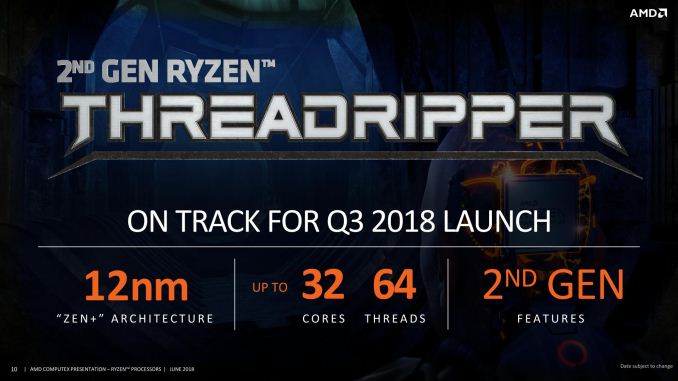
One of the surprises from AMD’s first year of the newest x86 Zen architecture was the launch of the Threadripper platform. Despite the mainstream Ryzen processors already taking a devastating stab into the high-end desktop market, AMD’s Threadripper offered more cores at a workstation-friendly price. For 2018, the next generation is going to be using AMD’s updated 12nm Zeppelin dies, as well as including a few new tweaks into the system including better boost and faster caches.
This article is still a work in progress, and will be updated as more news comes in.
AMD’s Zeppelin silicon has 8 cores, and the first generation Threadripper uses two of them to get to the top-SKU of 16-cores. Inside the CPU however, there are four pieces of silicon: two active and two inactive. For this second generation of Threadripper, called Threadripper 2 or the Threadripper 2000-series, AMD is going to make these inactive dies into active ones, and substantially increase the core count for the high-end desktop and workstation user.
At the AMD press event at Computex, it was revealed that these new processors would have up to 32 cores in total, mirroring the 32-core versions of EPYC. On EPYC, those processors have four active dies, with eight active cores on each die (four for each CCX). On EPYC however, there are eight memory channels, and AMD’s X399 platform only has support for four channels. For the first generation this meant that each of the two active die would have two memory channels attached – in the second generation Threadripper this is still the case: the two now ‘active’ parts of the chip do not have direct memory access.
This technically adds latency to the platform, however AMD is of the impression that for all but the most memory bound tasks, this should not be an issue (usually it is suggested to just go buy an EPYC for those workloads). While it does put more pressure on the internal Infinity Fabric, AMD ultimately designed Infinity Fabric for scalable scenarios like this between different silicon with different levels of cache and memory access.
Update: AMD has just published a full copy of their slide deck for the Threadripper 2 presentation. In it are a few interesting factoids.
| AMD Threadripper CPUs | |||||
| Threadripper 2 32-Core Sample |
Threadripper 2 24-Core Sample |
Threadripper 1950X |
Threadripper 1920X |
||
| Socket | TR4 (LGA) 4094-pin |
||||
| CPU Architecture | Zen+ | Zen+ | Zen | Zen | |
| Cores/Threads | 32 / 64 | 24 / 48 | 16 / 32 | 12 / 24 | |
| Base Frequency | 3.0 GHz | 3.0 GHz | 3.4 GHz | 3.5 GHz | |
| Turbo Frequency | 3.4 GHz (WIP) | 3.4 GHz (WIP) | 4.0 GHz | 4.0 GHz | |
| L3 Cache | 64 MB ? | 48 MB ? | 32 MB | 32 MB | |
| TDP | 250W | 250W | 180W | 180W | |
| PCIe 3.0 Lanes | 60 + 4 | ||||
| Chipset Support | X399 | ||||
| Memory Channels | 4 | ||||
- Both the 24-core and 32-core sample CPUs are clocked at 3.0GHz base and 3.4GHz all-core turbo, with the latter being a work-in-progress according to the company.
- The 32-core system was equipped with DDR4-3200 memory. This is notable because the Ryzen processors based on the same 12nm Zeppelin dies officially max out at DDR4-2933.
- The codename for the processor family is listed as "Colfax". This is the first we've heard this codename from AMD.
- Despite the high TDP, both CPUs used in AMD's demos were air-cooled, using AMD's Wraith Ripper Air Cooler
Also announced at the presentation is the state of play of motherboards. According to the motherboard vendors These new Threadripper 2000-series processors will have a peak TDP rating of 250W, which is much higher than 180W we saw on the 1950X. We have been told by partners that the 250W rating is actually conservative, and users should expect lower power consumption in most scenarios. Nonetheless, it was stated by several motherboard vendors that some of the current X399 motherboards on the market might struggle with power delivery to the new parts, and so we are likely to see a motherboard refresh. That is not saying that the current X399 offerings will not work, however they might not offer overclocking to the level that users might expect. At Computex there are new X399 refresh motherboards being demonstrated by a few companies, and we will report on them in due course. Other specifications are expected to match the previous generation, such as PCIe lane counts, despite the newly active dies.
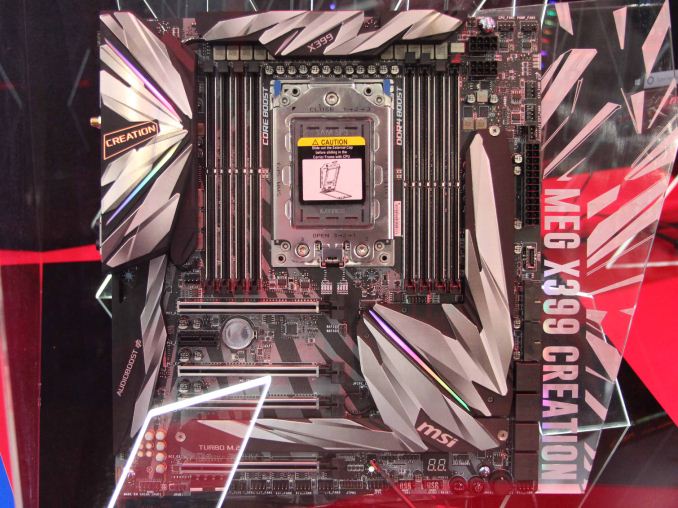
MSI's 19-phase X399 Refresh Motherboard
The launch for these new processors, according to our moles is in early August. This aligns with what AMD stated at the beginning of the year at CES, and is almost a year from the original Threadripper launch.
Pricing on the processors is set to be revealed either today or closer to the launch time. We will update this piece as more information comes in.
It will be interesting if AMD is going to go through the ‘unboxing’ embargo this time around, or just jump straight to full performance reviews. As always, come to AnandTech for the full story.
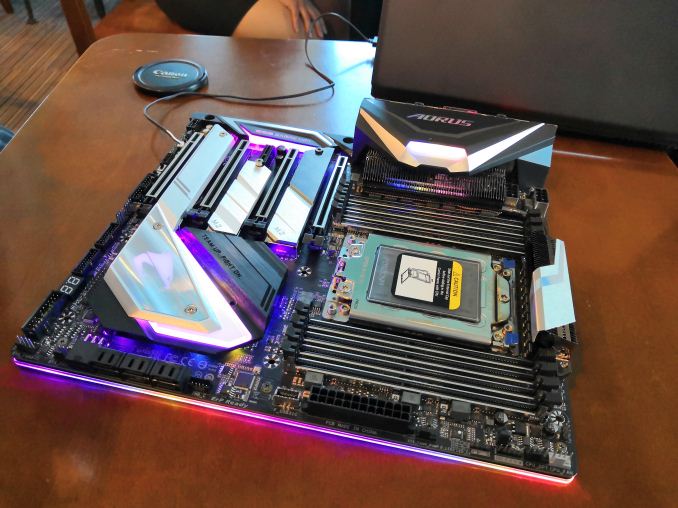
GIGABYTE's new X399 Refresh Motherboard
| Want to keep up to date with all of our Computex 2018 Coverage? | ||||||
 Laptops |
 Hardware |
 Chips |
||||
| Follow AnandTech's breaking news here! | ||||||


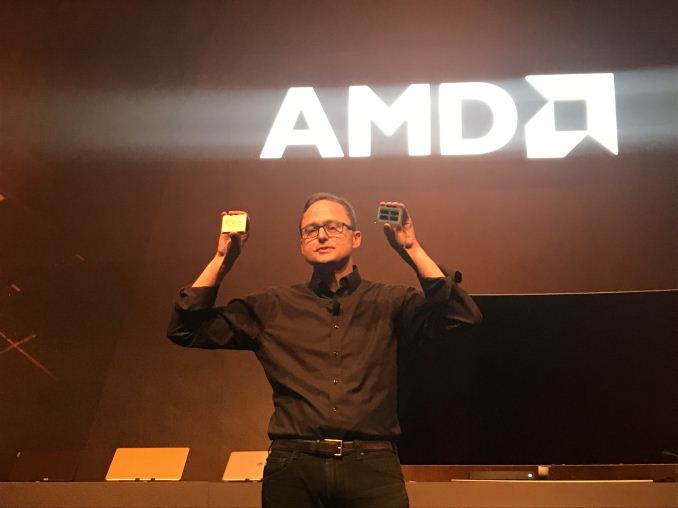
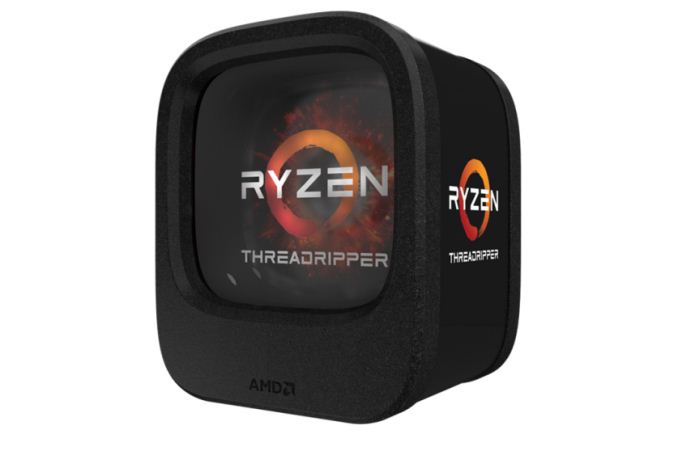
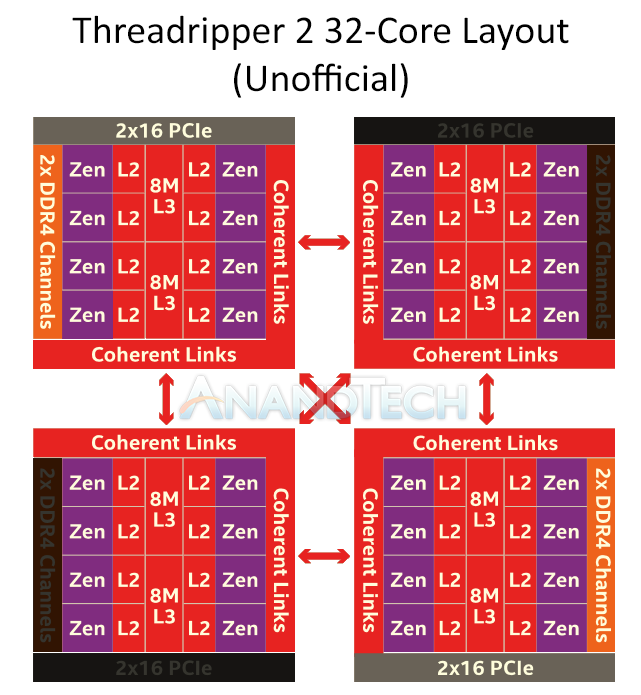
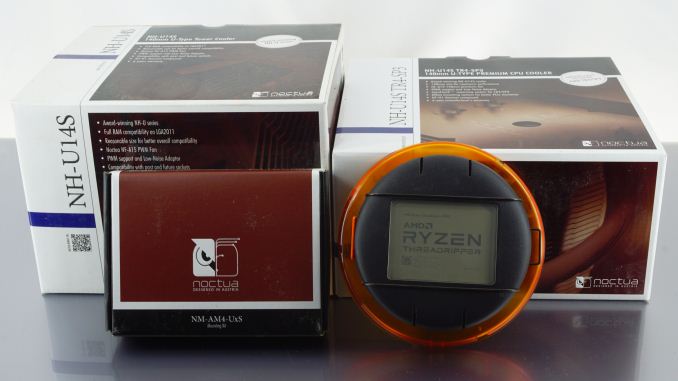














203 Comments
View All Comments
cyberguyz - Thursday, June 7, 2018 - link
That is typical Intel marketing and why I walked away from them. Now on TR 1950X and not regretting a moment of it.CajunArson - Tuesday, June 5, 2018 - link
So, since Cuttress can hardly keep it in his pants when talking about how much we need to have fewer and fewer cores on a single piece of silicon, how excited are we to have a "threadripper" where each die gets a whole one channel of RAM and 75% of system memory requires an off-die hop.I seem to remember when the hot thing was an "on die memory controller". At this point, we are down to a "25% on-die memory controller if you are lucky" in Threadripper 2.
Domaldel - Tuesday, June 5, 2018 - link
Actually, two of the dies have two channels of direct memory access each, the other two do not.And it's not that different from Intels approach on those bigger chips with ringbus, remember the CPUs with two rings of ringbus?
The second ring did *not* have direct memory access either.
This is similar.
And considering the price point I really don't think we can complain, if we *need* the extra memory bandwidth or access we can go to Epyc instead.
And yes, this approach *does* introduce more latency, but for a lot of applications that's not a concern at all or the impact is only minor.
This isn't a gaming chip after all.
realistz - Tuesday, June 5, 2018 - link
Threadripper is advertised as a HEDT chip where workstation meets gaming and overclocking. Doing poorly at any of those and it is entirely something else.mczak - Wednesday, June 6, 2018 - link
There's zero games which would benefit from even more than just 8 cores. If the OS is aware of some cores being worse due to not having memory attached to them directly, it could simply never use them unless the load really requires more than 16 cores / 32 threads. So for gaming this should easily be a non-issue. (But I'm not saying there won't be other workloads where this indeed might be quite suboptimal.)SirPerro - Wednesday, June 6, 2018 - link
This. People fail to see this as what it is. This is a 16 core CPU, with "overcoring" when necessary. This probably will work like a Threadripper 1, using the cores with lesser memory latency, and just kick in the other pair of 16 cores when necessary.I'm sure the next version will be more ambitious with their memory access, but I personally like this proposition. Not everyone need the best from 32 cores every time, and those who need it won't buy this particular CPU.
peevee - Wednesday, June 6, 2018 - link
"This probably will work like a Threadripper 1, using the cores with lesser memory latency, and just kick in the other pair of 16 cores when necessary."No OS will know this. So no. Your threads will be assigned randomly, unless you will set maximum number of threads and affinity mask for the process manually.
0ldman79 - Wednesday, June 6, 2018 - link
Says who?Windows has been updated to use cores first rather than threads on every CPU with SMT and it assigns based on modules on the AMD Bulldozer and it's children.
The Skylake assigns the thread based on a dozen different metrics, one of them being the individual core temperature. I think they can handle it.
tamalero - Wednesday, June 6, 2018 - link
The benefit stated in HEDT is content creation, which also targets gamers WHO STREAM or work while they play.If you can keep one game using 1 die, you wont have latency problems. The other dies could be working slower on background tasks like 3d rendering or streaming videos with real time processing.
GreenReaper - Sunday, June 10, 2018 - link
True in most cases, but bear in mind that there are potential contention issues with, say, Level 3 cache, memory bandwidth or access to the GPU.